Instrumentation & Services
Instrumentation
ThermoFisher Bigfoot (Jet-in-Air technology)
The most recent addition to the Salk Institute’s Flow Cytometry Core is the Thermo Bigfoot Spectral Cell Sorter, a state-of-the-art system funded by an NIH High-End Instrumentation award (S10 OD034268). This advanced jet-in-air sorter is equipped with seven spatially separated lasers and 55 fluorescence detectors, offering both conventional and spectral unmixing detection modes. Engineered for high-speed, high-sensitivity sorting, the Bigfoot’s design ensures gentle processing of delicate and sensitive cell types.
To accommodate a wide range of particle sizes, the system has interchangeable nozzles (70, 100, 120, 150, 200µm) and can simultaneously sort up to six distinct populations.
The Bigfoot also supports multiple scatter detection modes, enabling simultaneous standard and small-particle detection, multi-laser scatter detection, polarization analysis, and sorting of low-scatter events—ideal for challenging applications such as extracellular vesicle (EV) analysis.
The instrument is housed in a fully enclosed biosafety cabinet with redundant aerosol management, enabling BSL-2 compliant sorting workflows. It supports a variety of collection formats, including multiple tube sizes and 96- and 384-well plates. Leveraging a novel multi-stream deposition system, the Bigfoot offers exceptional throughput—sorting high-abundance targets into 384-well plates in as little as 24 seconds—while maximizing sample efficiency.

BD Influxes (Jet-in-Air technology)
Optical Configuration (Influx-1)
Optical Configuration (ShadowFACS)
Download Optical Configuration (XLS)
The Salk core has 3 state-of-the-art BD InfluxTM cell sorters. These are jet-in-air design instruments uniquely suited for isolating delicate cells, and for high-speed sorting. “Influx-1” is equipped with 5 lasers, 11 fluorescent detectors. “Kirin Influx” is equipped with 4 lasers, 16 fluorescent detectors. “ShadowFACS” is equipped with 4 lasers, 13 fluorescent detectors. Additionally, ShadowFACS is equipped with a forward scatter (FSC) pinhole assembly that facilitates detection of dim FSC signals when performing small particle analysis. All Influxes have biosafety enclosures that enable BSL2 rated sorts. Several features of the Influx (including flow cell characteristics and use of low-noise pre-amp electronics) come together to enable excellent detection sensitivity and stable high-throughput sorting, while maintaining the integrity and viability of sensitive cell types. It is also remarkably fast and accurate at sorting into 384-well plates (~3.5min/plate for highly abundant targets).
The Influx has several nozzle sizes (70, 86, 100, 140-um) available to accommodate a variety of particle sizes and can sort up to 6 populations simultaneously. Cells may be collected into a variety of tube types or multi-well plates (e.g. 384 well).
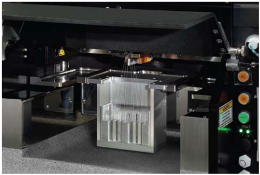
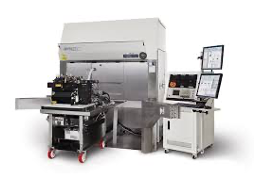
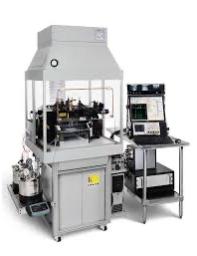
BD FACSAria Fusion (Fixed alignment cuvette)
Optical Configuration (Fusion)
Download Optical Configuration (XLS)
The BD Biosciences FACSAriaTM Fusion is a high-end cell sorter. The Salk’s Aria Fusion is from the Special Order Research Product (SORP) line, with air launched high power lasers. The Aria design integrates fully fixed stream and optical alignment with a patented quartz cuvette flow cell and optical gel-coupled optics. While geared towards high sensitivity, complex flow cytometry, it remains easy to use, controlled by the same Diva software used by other BD Biosciences analyzers in the core. It is configured with 13 fluorescence and 2 light scatter detectors. This instrument is equipped with a full enclosure Class II Type A2 biosafety cabinet for sorting up to biosafety rating level BSL2.
The Aria Fusion has several nozzle sizes available (70, 85, 100, 130-um) to accommodate a variety of particle sizes and can sort up to 4 populations simultaneously. Cells may be collected into a variety of tube types or multi-well plates (e.g. 384 well).
CITING USAGE IN PUBLICATIONS: This instrument was acquired by a NIH Shared Instrumentation Grant (S10) award along with additional funding support from Larry and Carol Greenfield Technology Fund. In addition to the Salk’s Cancer Center grant NIH-NCI CCSG: P30 014195, please reference S10-OD023689 for reporting the use of this sorter.
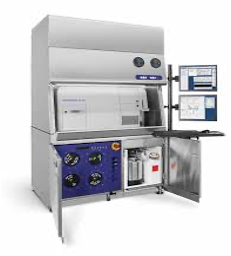
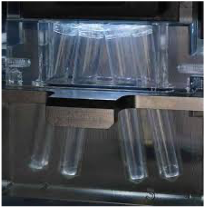
BD FACS Symphony A5 SE
The BD FACS Symphony A5 SE (Spectral-Enabled) is a high-performance flow cytometer capable of both conventional and spectral detection. It features ultra-quiet VPX electronics, high-powered lasers, and highly sensitive photomultiplier tubes (PMTs). Configured with five lasers, the A5 SE supports detection of 48 fluorescent parameters, along with forward and side scatter (FSC and SSC).
The system offers flexible sample input options, including standard tubes and a high-throughput sampler (HTS) compatible with 96- and 384-well plates. It incorporates two onboard algorithms that allow seamless switching between conventional and spectral acquisition modes, offering versatility for a wide range of applications. Pre-validated assay settings for various cell types have been established and saved on the instrument for immediate use. The A5 SE operates on BD FACSDiva software and is located in the Analyzer Room.
BD FACS Symphony A3
Download Optical Configuration (XLS)
The BD FACS Symphony A3 is a high performance flow cytometer. It features ultra-quiet VPX electronics, high-powered lasers, and highly sensitive photomultiplier tubes (PMTs). Configured with five lasers, the A3 supports detection of 23 fluorescent parameters, along with forward and side scatter (FSC and SSC).
The system offers flexible sample input options, including standard tubes and a high-throughput sampler (HTS) compatible with 96- and 384-well plates. The A3 operates on BD FACSDiva software and is located in the Analyzer Room.
LSRII-1 and LSRII-2
Download Optical Configuration (XLS)
The BD Biosciences LSR II is a configurable, high-end, analytical cytometer. A reliable platform well suited to complex polychromatic flow cytometry, the Salk’s Flow Core has two units equipped with 5 lasers, and the maximum 18 fluorescence detectors, along with forward and side scatter (FSC and SSC). Since the two are configured similarly, users are able to move easily from one instrument to the other. LSRII-2 is also equipped with a HTS (High Throughput Screening) module, which enables samples to be acquired in multi-well plates. The LSR II cytometer runs on BD FACS Diva acquisition software. Both units are located in the Analyzer Room.
- Practical Flow Cytometry– 4th Edition (Howard Shapiro)
- Flow Cytometry: A Basic Introduction (Wiki) (Mike Ormerod)
- BD Introduction to Flow Cytometry (on-line course)
- Selecting Reagents for Multicolor Flow Cytometry (Holden Maecker, Joe Trotter)
- Interpreting flow cytometry data: a guide for the perplexed (Herzenberg et al)
- Cytokine Encyclopedia
- Common phenotypic markers (Mouse and Human)
- Maturation markers reference
- Pathways database
Services
Using The Salk’s Flow Cytometry Core Facility
FCCF has 4 analyzers and 5 cell sorters. The Core facilitates access to Flow Cytometry technologies through three main service categories: Staff Operated Cell Sorting, Cell Sorting Training, and Analytical Flow Cytometry Training. The following sections guide users on how to access Flow Core Services.
Salk Institute Researchers:
- Review FCCF’s current Core Access and Usage information on Salkland (link below).
- Review FCCF’s current training plan, complete any self study materials listed on Salkland.
- Contact the core to discuss your experimental needs and identify instrument(s) to train you on. At this time we can go over any protocols you will use to prepare samples for flow analysis. For maintaining instrument cleanliness, samples must include a DNAse I clean up (see Help File document on Salkland for more information and examples of where it can be conveniently included during sample preparation).
- Training: Orientation will be arranged (2 sessions, one to learn the processes, a second session to demonstrate proficiency). Upon completion, scheduler access is activated and we will schedule follow-up staff supported analysis session(s) as needed with the goal of helping you become independent. ➢ Click to go to Salkland (salk.edu/fccfaccess)
- Review FCCF’s current Core Access and Usage information on Salkland (link below).
- Review FCCF’s current training plan, complete any self study materials listed on Salkland.
- Contact the core to discuss your experimental needs and identify instrument(s) to train you on. At this time we can go over any protocols you will use to prepare samples for flow analysis. This will include going over what is needed to generate sort ready samples (e.g. DNAse I cleanup step to ensure a low viscosity high quality sort sample, and appropriate pH buffered sort buffers).
- Training: This takes place over a couple of sessions, in order to cover key skill blocks we require autonomous users to learn. We will arrange some “practice” sessions for you to demonstrate proficiency. Upon completion, access to the Google calendar will be shared. Follow-up staff supported analysis session(s) will be scheduled as needed with the goal of helping you become independent. ➢ Click to go to Salkland (salk.edu/fccfaccess)
- Before starting an experiment needing FACS (fluorescence activated cell sorting), read through FCCF guidelines on preparing for cell sorting. Be sure to include a DNAse I clean up step (or discuss alternatives with FCCF staff); this is to ensure you have a high quality, low viscosity sample appropriate for sorting.
- Submit a sort request form (on Salkland) BEFORE starting a time sensitive experiment. ➢ Click to go to Salkland (salk.edu/fccfaccess)
